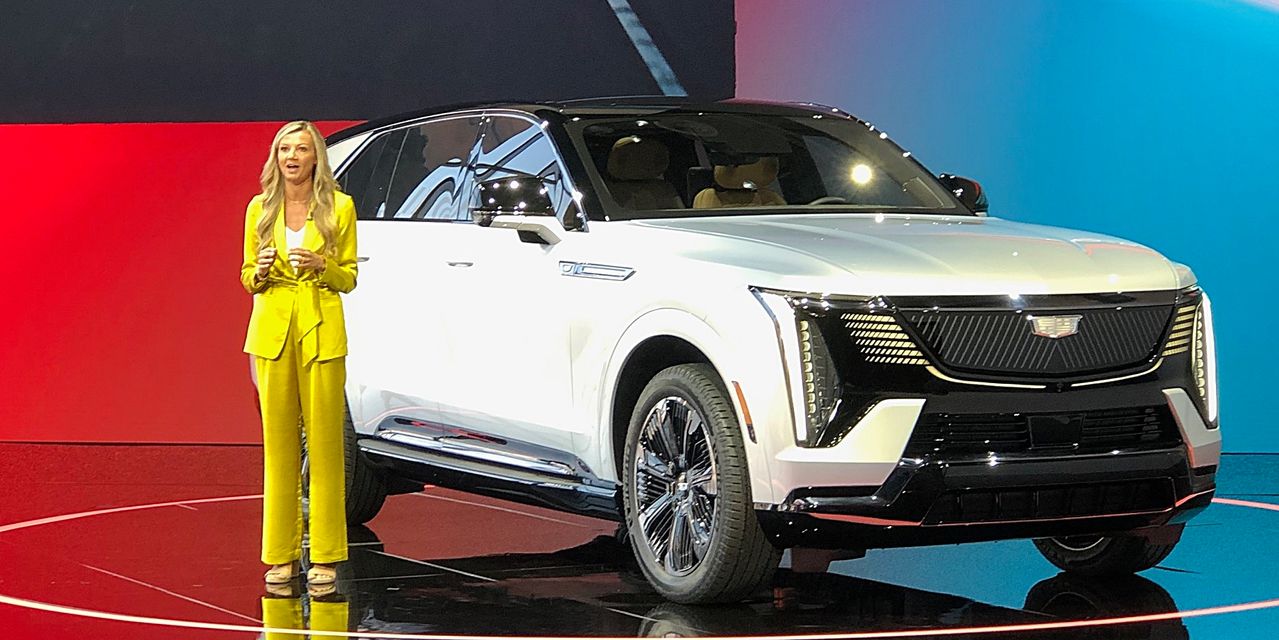The field of three-row electric SUVs—empty until very recently—is now growing rapidly. Cadillac revealed its battery-powered Escalade IQ on Wednesday in Manhattan, as a rival to such vehicles as the Kia EV9, the Lucid Gravity, the VW ID.Buzz, and the Mercedes-Benz EQS.
It’s not surprising that automakers are pursuing this segment, because luxury SUVs were a US$4.1 billion global business in 2022, with a projected compound annual growth rate of 11% between this year and 2032. And anyone making luxury SUVs will have to electrify them. Cadillac will be all-electric in 2030.
The IQ is an unabashed luxury vehicle with a technological edge, and 450 miles of range from a huge 200-kilowatt-hour battery pack. Range anxiety—a very real thing—should become a thing of the past. The Cadillac is capable of producing 750 horsepower and 785 pound-feet of torque in Velocity Max mode—something like the Hummer EV’s “Watts to Freedom” launch mode.
IQ Chief Engineer Mandi Damman tells Penta that customers can use Velocity Max for as long as they want, provided they can afford the battery drain. The Hummer limits its launch mode. In normal driving, there’s a still-very-healthy 680 horsepower and 615 pound-feet. The zero-to-60 dash takes less than five seconds.
The all-wheel drive IQ (with motors on each axle) will start around US$130,000 and will be delivered to dealers beginning next summer as a 2025 model. Visually, the IQ is imposing and very recognizable as an upright Escalade but with an undisclosed “stellar” aerodynamic profile that Damman says “is a great number when you hear it”—and 15% less than the current gas Escalade. GM did not disclose the weight of the IQ, but it’s probably considerable—the Hummer EV, which may share some components and battery elements, weighs more than 9,000 pounds.
“The business reasons to have an all-electric Escalade are pretty strong,” GM President
Mark Reuss
says.
So far, the IQ will be confined to North America, Reuss says, but he did not rule out exports to Europe, the Middle East, or China in the future. Will there be a more affordable and stripped-down Suburban version of the IQ? “Probably not, but there may be one with more space,” he says. There was an Escalade pickup once, but that’s not in the cards either.
Some automakers close off the under-hood space on their EVs, but Cadillac offers a fully carpeted and trimmed 12 cubic feet of “e-trunk.” One of the more eye-popping aspects of the IQ is its standard 55-inch pillar-to-pillar dash screen reminiscent of Mercedes’ Hyperscreen. On the IQ, the last 20 inches are devoted to content, including entertainment, for the passenger. Hulu and YouTube buttons were shown on the mock-up. If the car is moving, the driver can’t see the passenger’s screen, but the polarization can be lifted to share content when it’s parked. GM’s SuperCruise autonomous driving is also standard on the IQ.
The IQ will be sold in two versions, Luxury and Sport, with the former featuring bright brushed aluminum on wheels and exterior moldings, and the latter some darkened metal trim.
A major option is an executive package that extends the heated and massage seats to the second row and adds 12.6-inch personal screens, some fold-up trays, and more controls on the console that starts up front. At this price many luxury features are standard, but not the 40-speaker AKG sound system. The base stereo has 19 speakers.
The IQ’s 800-volt architecture means it can add 100 miles of range in 10 minutes at a 350-volt fast charger, Reuss says. Via a 240-volt home unit, the big SUV’s 19.2-kilowatt onboard charger adds 37 miles per hour. GM has embraced a charging partnership with Tesla’s NCAS system, but that capability may not be on the initial run of IQs.
The IQ’s turning radius is 6.5 feet less than a standard Escalade, thanks to rear-wheel steering. The 24-inch wheels (with 35-inch tires) are the biggest ever offered on an Escalade. Towing is important in this category, and the Escalade IQ can handle 8,000 pounds. All of GM’s EVs will be able to provide power to homes in the case of a blackout, and the Escalade is no exception. That feature will be added via an over-the-air update.
Cadillac is developing a full range of high-end electric SUVs, including the Lyriq (starting at US$58,590) and the ultra-luxury Celestiq (a lofty US$340,000). At the same time, GM isn’t ignoring the affordable side of the market, and recently announced that it would bring back the Bolt EV. Reuss says that the electric Blazer (US$44,995) is reaching dealerships now, and the battery Equinox (around US$30,000) will follow in the fall. “They’re awesome with available range near 300 miles,” he says.
Read the full article here



